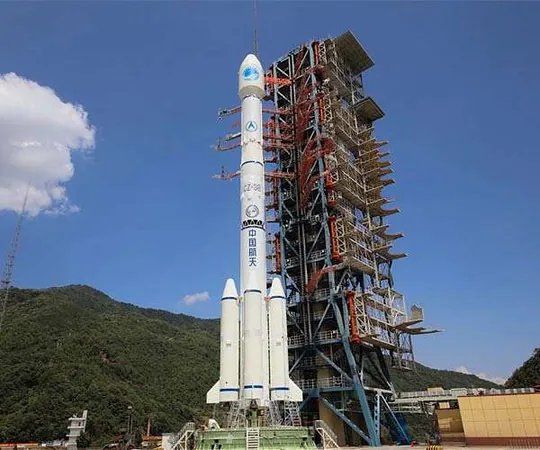
New Insights on Chondritic Meteorites: How They Formed in a Calmer Solar Nebula
2024-12-12
Author: Emma
Introduction
Chondritic meteorites, known as chondrites, are among the oldest stellar materials in our solar system, dating back 4.5 billion years. These ancient rocks serve as essential records of planet formation and the primal elements that compose them—oxygen, silicon, magnesium, iron, and nickel—mirror the chemical composition of the sun’s atmosphere.
Formation of Chondrites
Recent studies have focused on how these meteorites formed from clumps of dust and molten particles, creating small spherical objects called chondrules. Under conditions of extreme heat—up to 2,000 Kelvin (around 1,727 °C)—these chondrules melted and fused together, eventually leading to the creation of asteroids, the building blocks of planets.
Challenging Long-held Beliefs
Interestingly, research led by Professor Guy Libourel and Dr. Anthony Seret from Université Côte d'Azur in France challenges the long-held belief that high-energy collisions among space debris were necessary for the creation of chondrites. Instead, their findings suggest a more tranquil process.
"In our work, we propose that chondrules can undergo both plastic deformation and fragmentation at much lower velocities than previously assumed,” explains Dr. Seret. “This opens an exciting door for a mechanical understanding of meteorite formation, complementing traditional chemical analyses.”
Innovative Study and Findings
Their innovative study utilized advanced simulations to observe how chondrules react under various temperature conditions. Below a certain temperature, chondrules resemble brittle solids that tend to crack easily. However, at higher temperatures, they exhibit ductile properties, flowing much like a viscous liquid.
One key discovery involved chondrules colliding at speeds of less than 10 meters per second—implying that relatively gentle interactions may still lead to significant alterations in their structure. Specifically, when heated beyond 1,000 Kelvin (about 727 °C), even small cubic aggregates could change shape and form through slow, plastic deformation under low-energy impacts.
Understanding Chondrite Variations
In contrast, when the temperature falls below this critical threshold, uneven cooling can lead to brittle cracking without any necessary external force. This duality in behavior explains the differences between ordinary and carbonaceous chondrites: the former, forming from numerous malleable chondrules, are more homogeneous, while the latter arise from fewer, more fragile chondrules that were unable to coalesce before breaking apart.
Broader Implications
This research is significant not only for understanding the origins of meteorites but could also apply to other rocky bodies in space, including asteroids. “Our findings reveal the intricate balance between ductility and brittleness—a crucial aspect in the evolutionary history of chondrites,” concludes Dr. Seret.
Conclusion
As we unlock these secrets about our solar system's early days, the study underscores an exciting shift towards understanding planetary formation in a less chaotic universe. Could this lead to groundbreaking insights about how other celestial bodies evolve? Stay tuned!









 Brasil (PT)
Brasil (PT)
 Canada (EN)
Canada (EN)
 Chile (ES)
Chile (ES)
 España (ES)
España (ES)
 France (FR)
France (FR)
 Hong Kong (EN)
Hong Kong (EN)
 Italia (IT)
Italia (IT)
 日本 (JA)
日本 (JA)
 Magyarország (HU)
Magyarország (HU)
 Norge (NO)
Norge (NO)
 Polska (PL)
Polska (PL)
 Schweiz (DE)
Schweiz (DE)
 Singapore (EN)
Singapore (EN)
 Sverige (SV)
Sverige (SV)
 Suomi (FI)
Suomi (FI)
 Türkiye (TR)
Türkiye (TR)